20 Exotic Animals that Look like Dragons
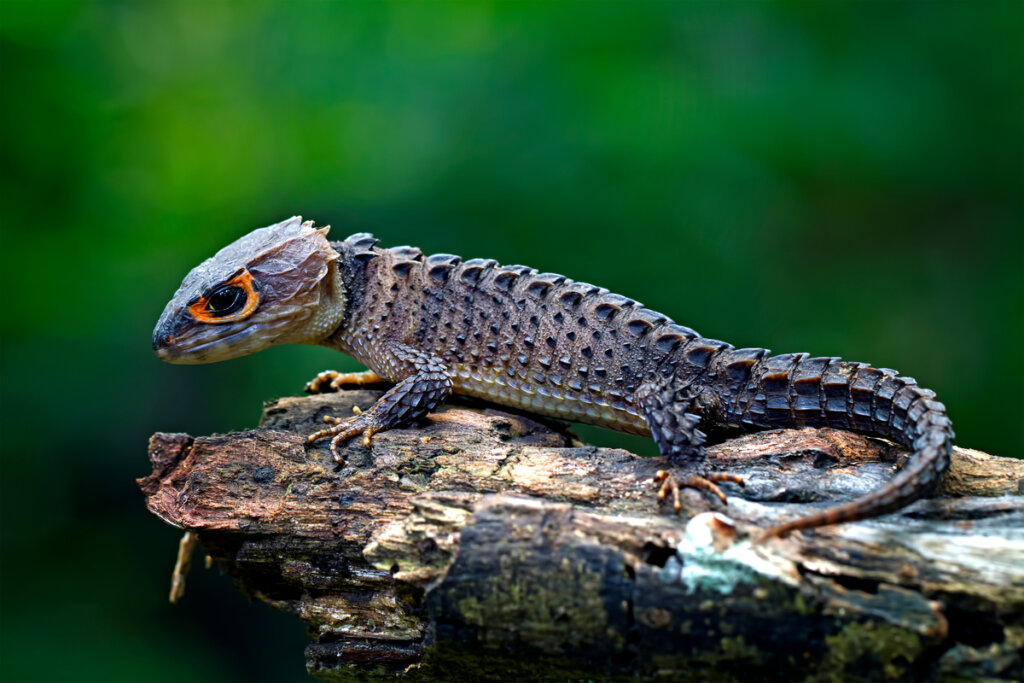
Dragons are mythological creatures that share certain characteristics with reptiles. For this reason, many people see similarities between some animals and the mythical dragon. Fortunately, some of them could possibly be acquired exotic pets, so it isn’t impossible to have your own “dragon” at home. Find out about some exotic animals that look like dragons.
This fictional creature is considered a chimera, which means that it has parts of different animals on its body. Each culture seems to have changed the appearance of this mythological being a bit, although nowadays it’s considered to be similar to a dinosaur. Read on and learn about some exotic animals that look like dragons.
Exotic animals that look like dragons
The great biodiversity of the planet means there are many exotic animals that look like dragons. This includes some organisms that are not reptiles, but bear an enormous resemblance to this mythological being. Several terrestrial and aquatic animals can be found that have the characteristics of a dragon. Listed below are some of these amazing creatures.
1. Chinese water dragon (Physignathus cocincinus)
The Chinese water dragon is a reptile with a very particular body containing spines, making it very similar to mythological dragons. This specimen can reach up to 1 meter in length (3.3 feet) and boasts bright green or brownish colors. For this reason, it’s considered a colorful exotic pet, although it isn’t easy to keep in captivity.
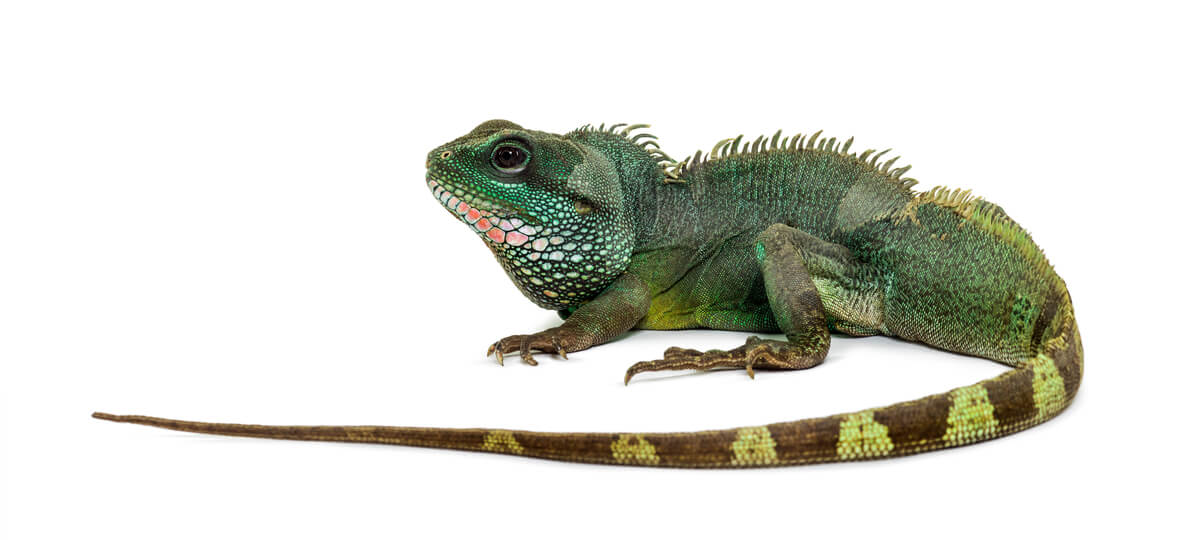
2. Crested gecko (Correlophus ciliatus)
Crested geckos are quite famous among reptile enthusiasts for their curious appearance. To top it off, these animals don’t require excessive care in captivity, which makes them excellent pets. This beautiful reptile is under protection and, in many countries, it’s necessary to go through certain regulations to acquire one.
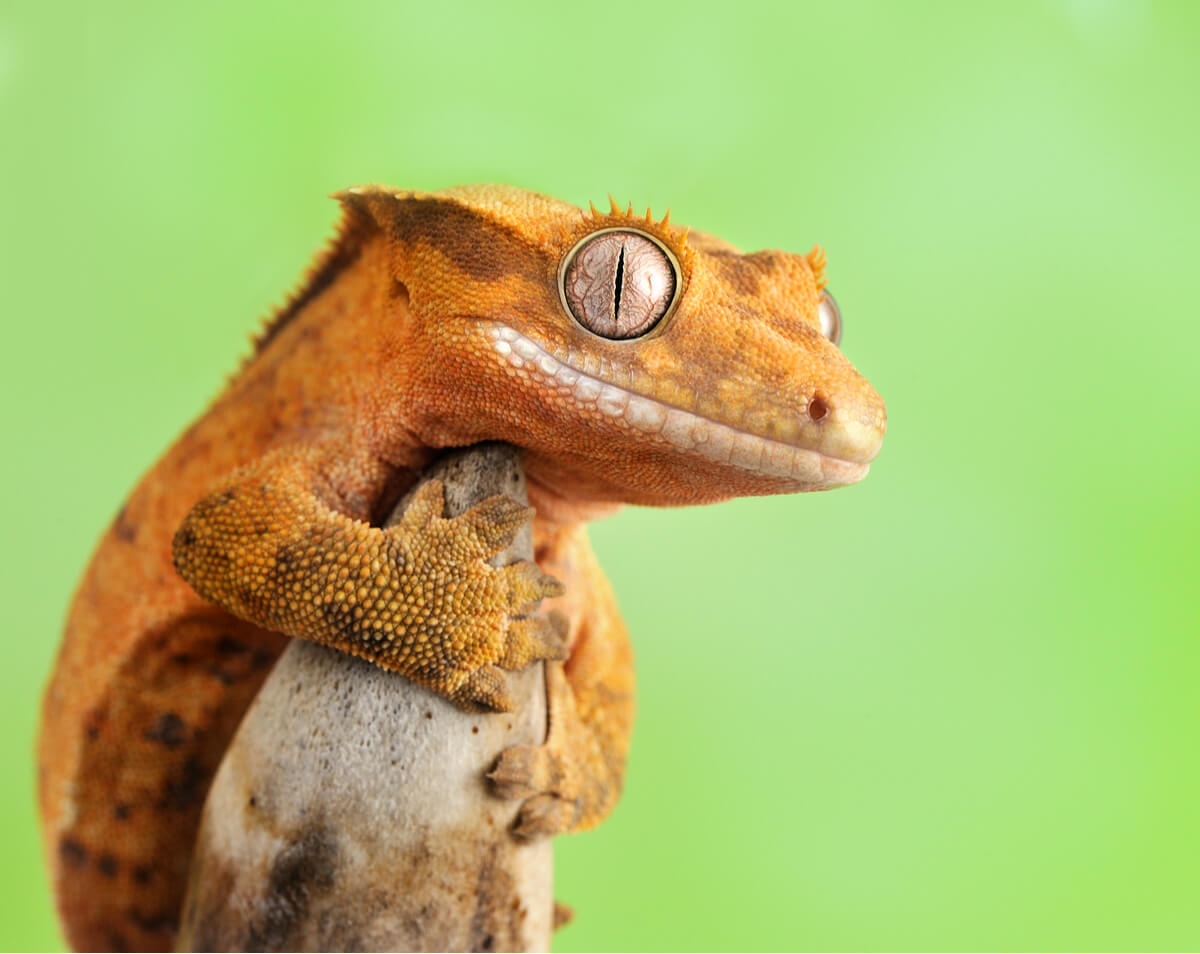
3. Leopard moray eel (Enchelycore pardalis)
This fish belongs to the group of the Anguilliformes, so it’s a close relative of regular eels. Although it’s an aquatic animal, its head has horns and sharp teeth that make it look quite similar to a dragon. In addition, its body can exhibit a wide variety of colors and patterns that are attractive to the eye.
Specimens of this species aren’t easy to keep in captivity and tend to be expensive to buy.
4. Common flying dragon (Draco volans)
The common flying dragon is one of the most dragon-like reptiles and exhibits a membrane on each side of its body that allows it to glide through the air. These “wings” are formed by extending its ribs and stretching its skin folds. Its appearance is amazing, which is why it’s often sought after as a pet.
This reptile requires a large area with trees to live, which isn’t easy to mimic in captivity.
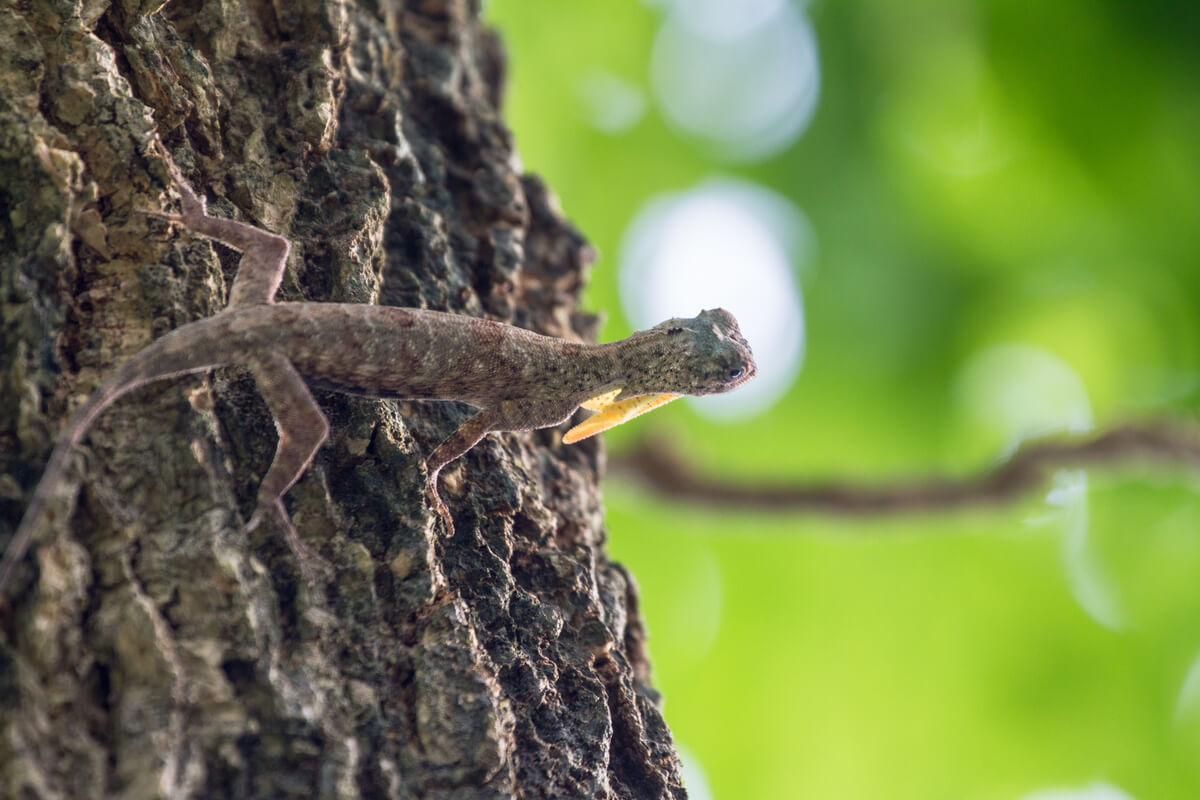
5. Red-eyed crocodile skink (Tribolonotus gracilis)
The crocodile skink is a beautiful reptile with a stunning appearance, as its body features a series of spines that run from its head to its tail. However, these animals are very susceptible to the variation of humidity in their environment. Therefore, it isn’t easy to keep them in captivity without automatic misting systems.

6. Plumed basilisk (Basiliscus plumifrons)
The basilisk is famous for the curious crest that emerges from its head and runs all the way down its back. In addition, it’s also known for its impressive ability to run on water. Both characteristics make it a sought-after species as an exotic pet, since owning a “small dragon” capable of running on water is quite something!
However, it isn’t easy to take care of this beautiful specimen. It reaches up to 90 centimeters (36 inches) in length including the tail, so it requires a very large terrarium with logs, soil, and water.
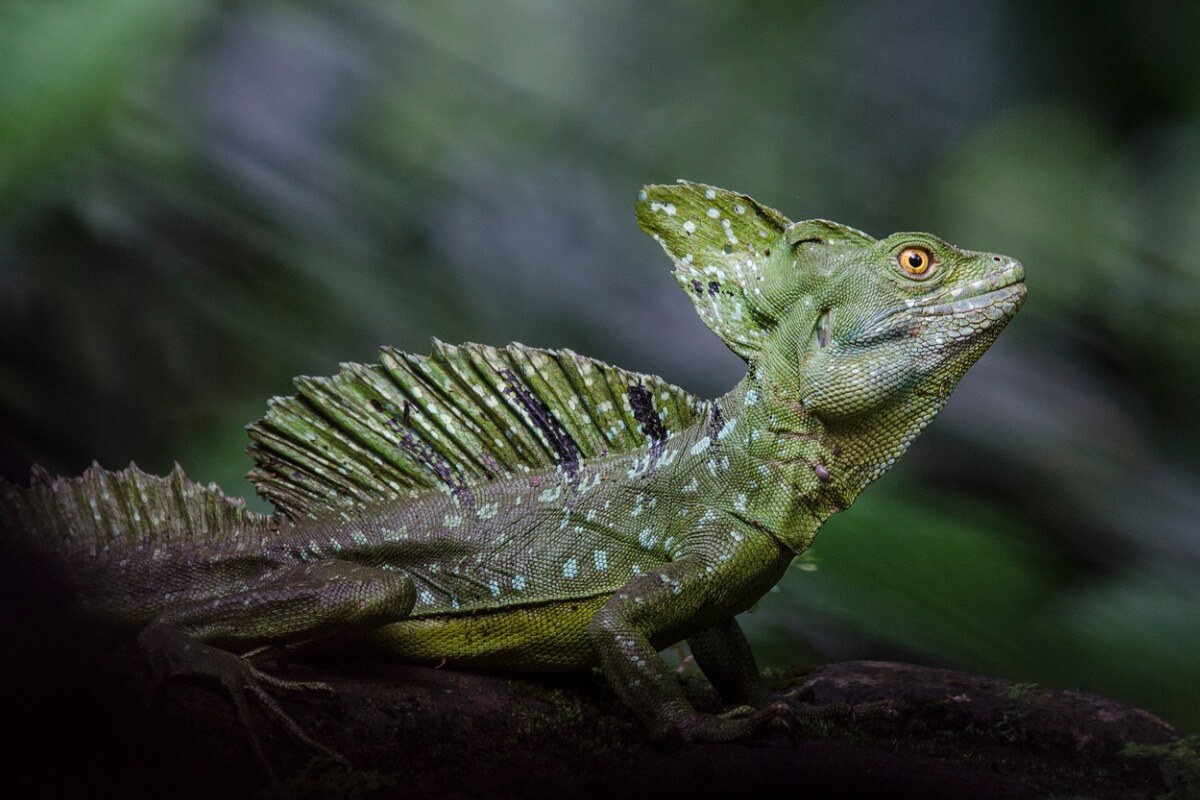
7. Mexican alligator lizard (Abronia graminea)
This species receives its name due to its granular scales, as these greatly highlight each part of its body. In addition, it has a combination of bright green and blue colorations. For this reason, it’s a popular exotic pet. It’s very difficult to look after this reptile and its sale is highly regulated.
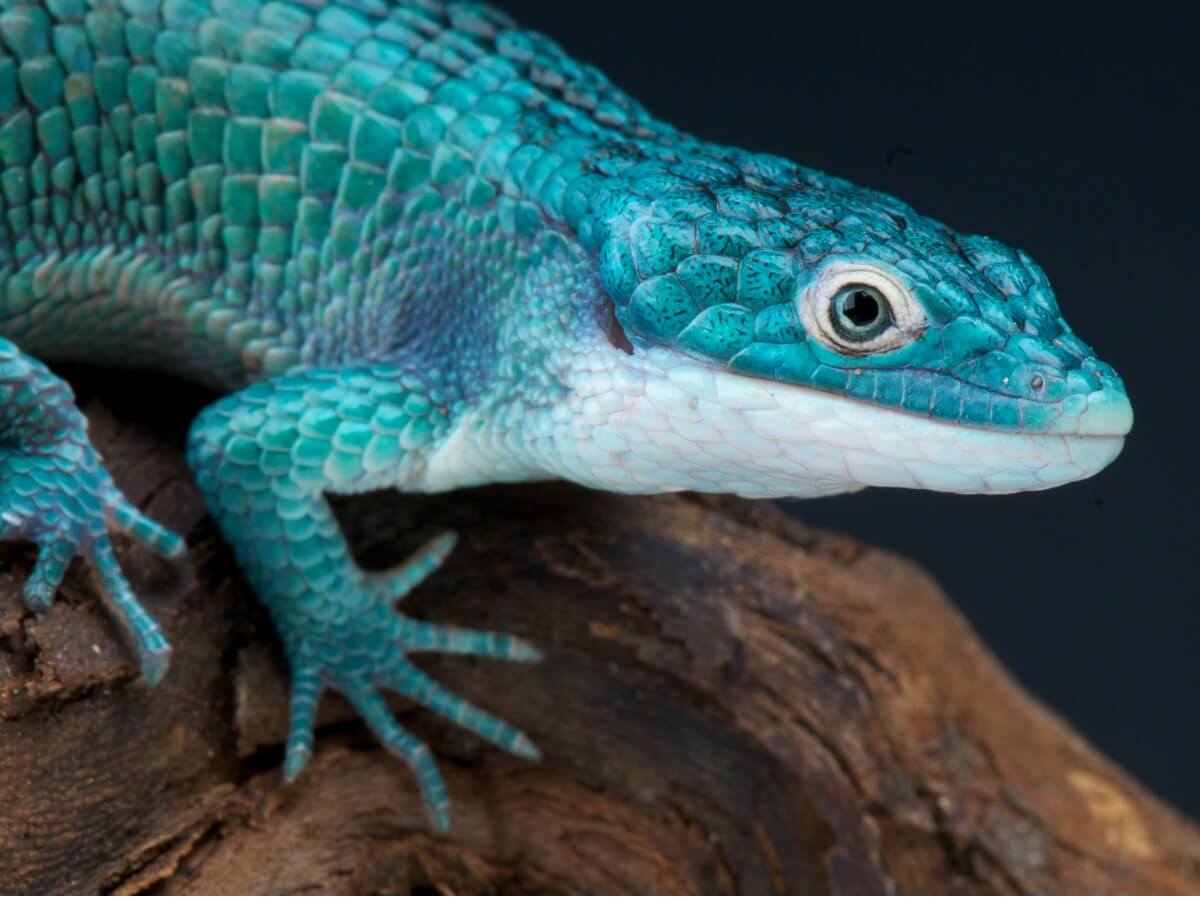
8. Jackson’s chameleon (Trioceros jacksoni)
This chameleon has a beautiful and incredible appearance, with three horns on its head and a crest that runs all the way down its back. Although very colorful, these reptiles live in warm and humid habitats that are difficult to recreate in captivity. For this reason, it’s only recommended to keep them as pets if you have previous experience with other reptiles.
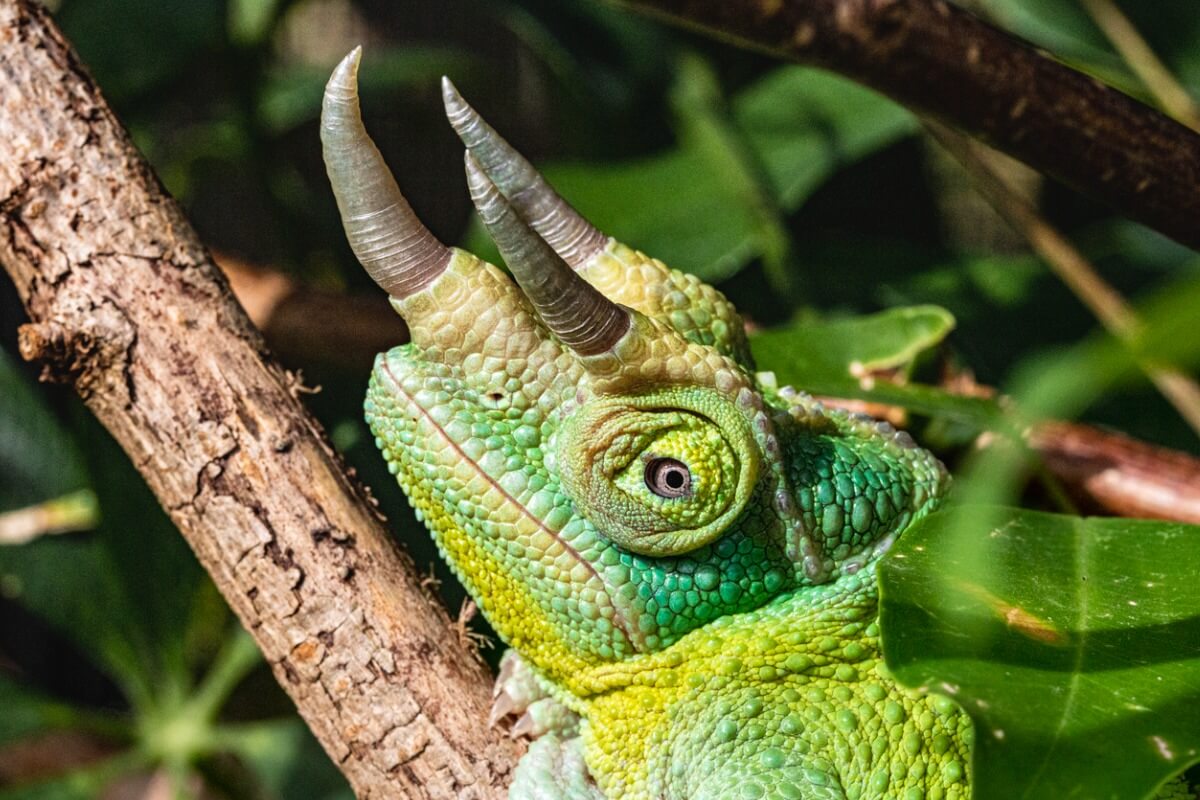
9. Leopard Gecko (Eublepharis macularius)
The leopard gecko is one of the most popular species as an exotic pet. This is because of its eye-catching wonderful color patterns. With the right care, this species is easy to keep in captivity, so it’s often a good choice as your first “dragon”.
Leopard geckos live well in plastic terrariums with paper substrate. However, they require external heat.
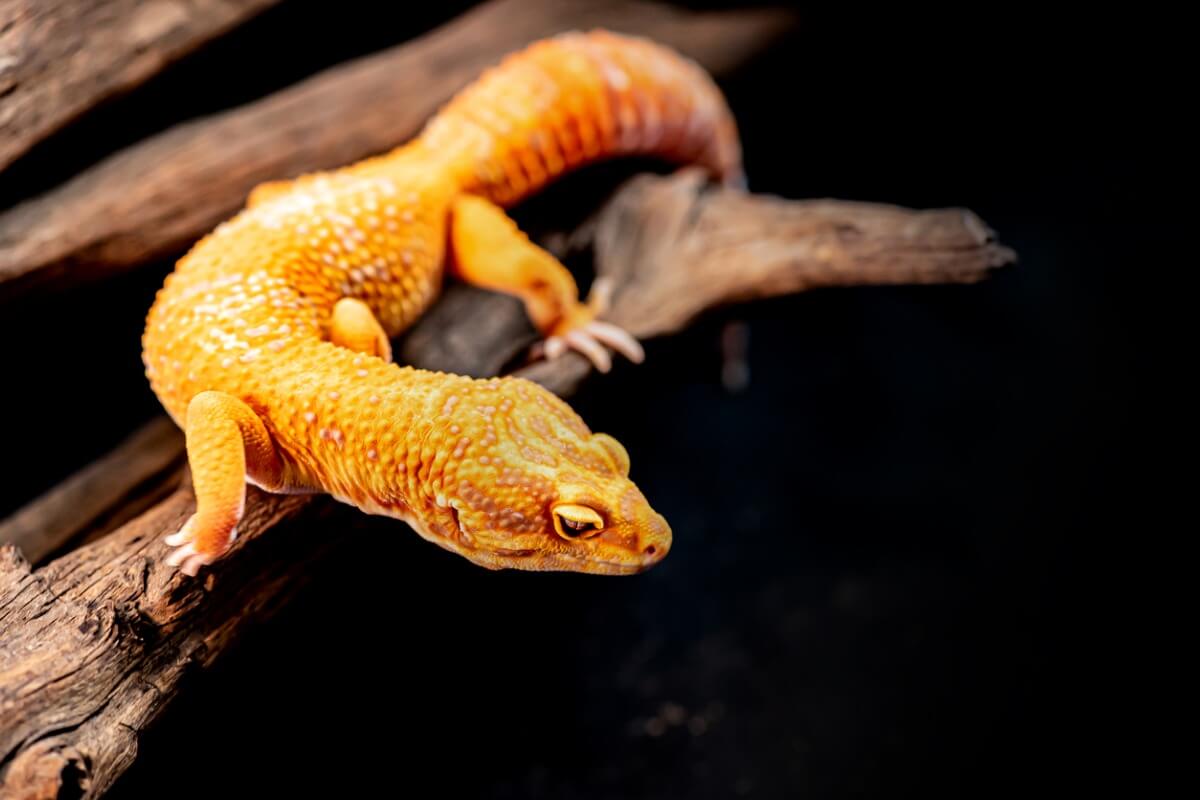
10. Pogona or bearded dragon (Pogona)
The pogona exhibits a series of pointed scales around its neck, which form a spiny beard that gives it a fearsome appearance. Despite this, the bearded dragon has a calm and peaceful temperament. In addition, its captive care isn’t very complex and it’s often recommended as an excellent choice for a novice (but committed) keeper.
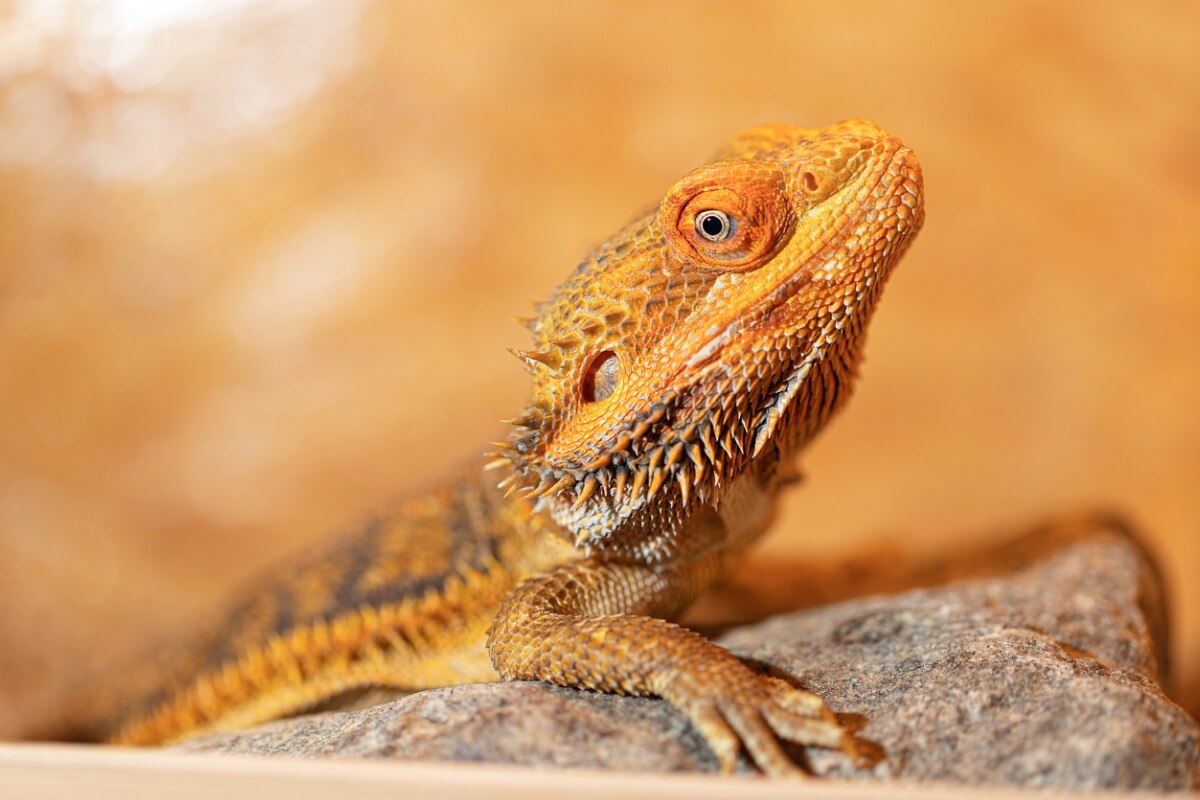
11. Axolotl (Ambystoma mexicanum)
This Mexican amphibian is characterized by certain larval traits throughout its life (neoteny). Although its appearance isn’t too similar to that of a ferocious dragon, it does bear some resemblance to some animated movie versions. This species is usually easy to care for in captivity, but, as it’s an aquatic reptile, water conditions must be kept stable.
The aquarium water shouldn’t go above 22°C (72 F).
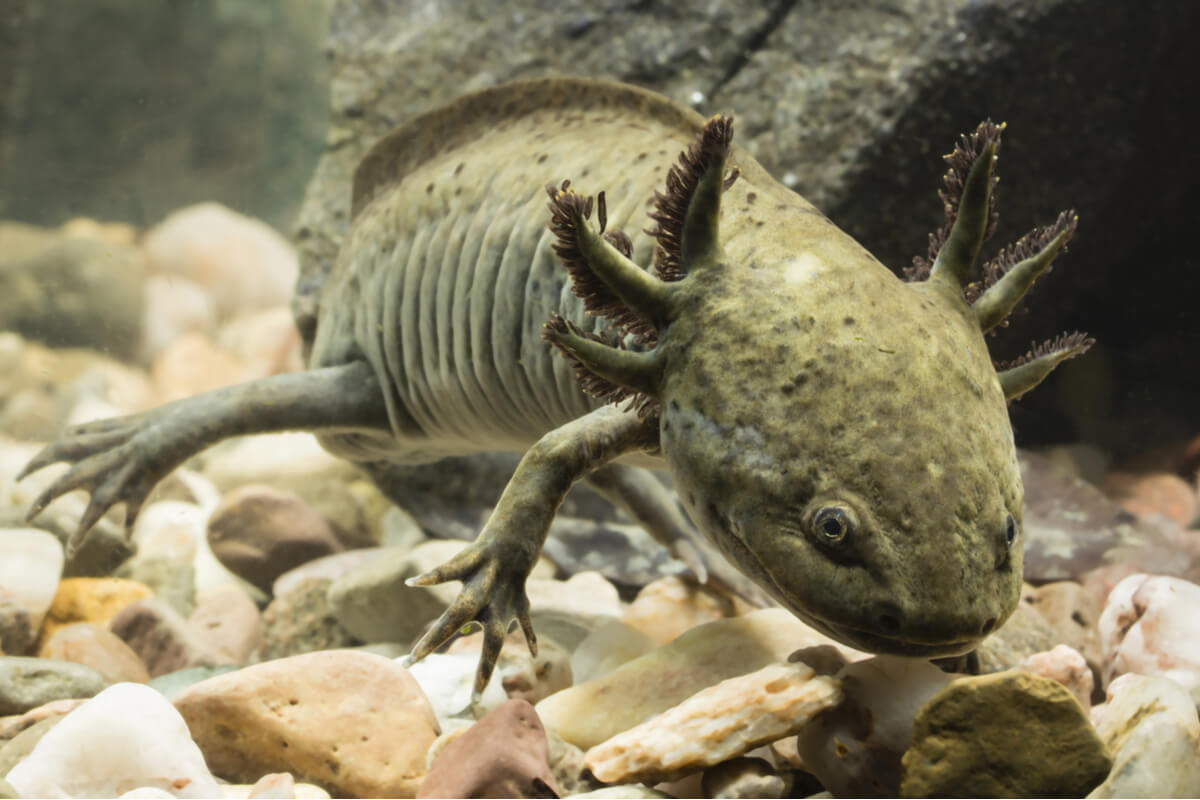
12. Messmate pipefish (Corythoichthys haematopterus)
This type of fish has a rather elongated appearance, although with certain irregularities in its skin similar to scales. In general, the pipefish closely resembles the Japanese version of the dragon, which is often depicted as a type of elongated snake that flies through the skies.
If you’re thinking of acquiring this species as a pet, remember that its care is a bit complicated.
13. Armadillo girdled lizard (Ouroborus cataphractus)
This species of lizard has a series of square scales along its back that serve as a defense. In addition, and in order to evade attacks, it rolls up on itself to expose the tips of the scales. Thanks to these characteristics, it’s considered a perfect specimen as a pet, although its sale is highly regulated.
14. Frilled lizard (Chlamydosaurus kingii)
This reptile is characterized by a huge “necklace” that extends along its head. With this, the organism manages to look more fearsome than many other reptiles and to scare away predators. It’s thanks to this feature that it looks so much like a dragon, although it is only 90 centimeters (36 inches) long.
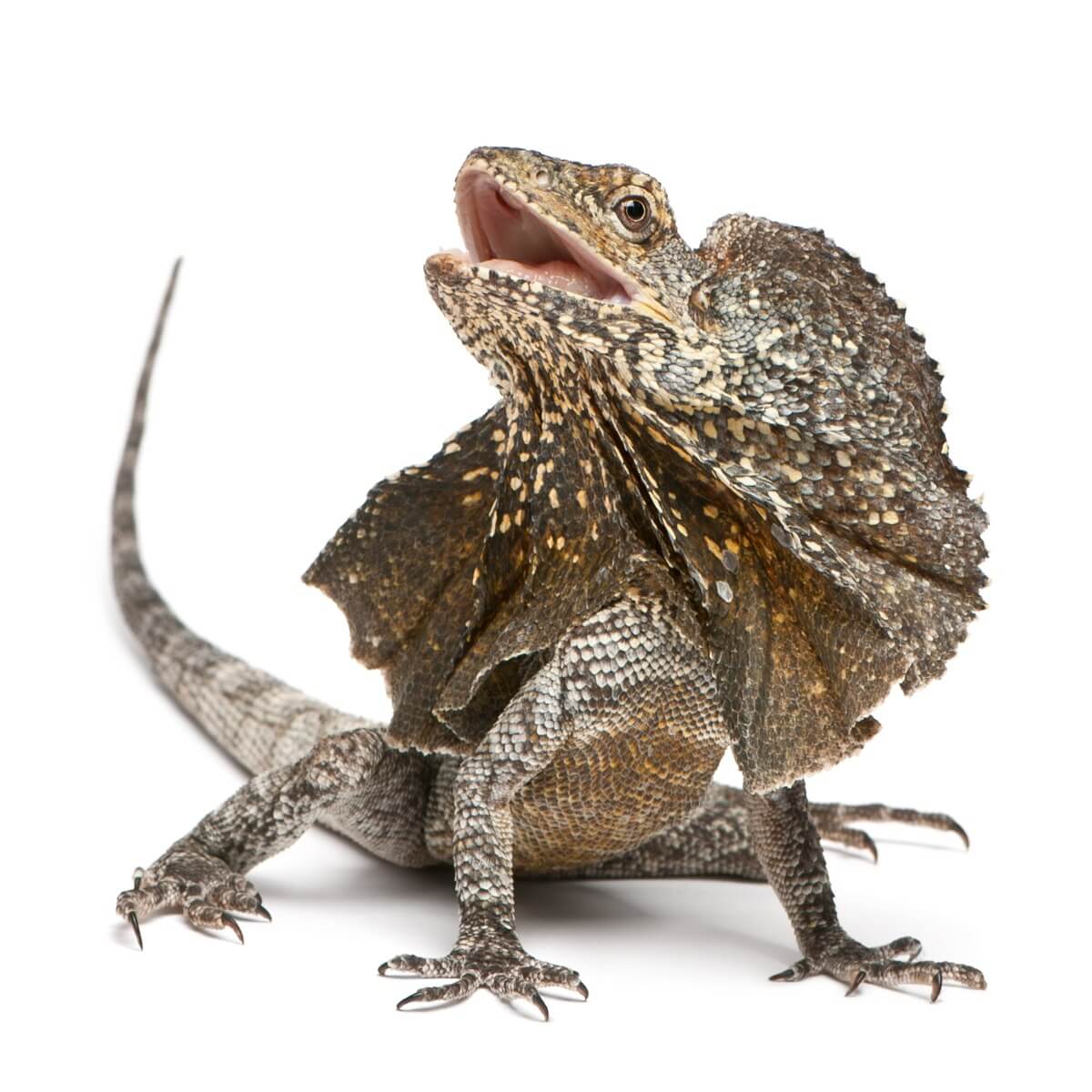
15. Dragon snake (Xenodermus javanicus)
Some snakes also bear some resemblance to dragons. Among them is the dragon snake, which is famous for having rows of scales that have a pointed shape all over its body. This species isn’t venomous, so its bite isn’t dangerous.
Despite this, much is unknown about its care in captivity, so it isn’t recommended to acquire it as a pet.
16. Senegal bichir (Polypterus senegalus)
This beautiful fish has a rather strange appearance, as it exhibits a series of dorsal fins that make it look like a dragon. As if that weren’t enough, the species is capable of displaying different colorations that are attractive to the eye. Consequently, it’s used as an ornamental species in large community fish tanks.
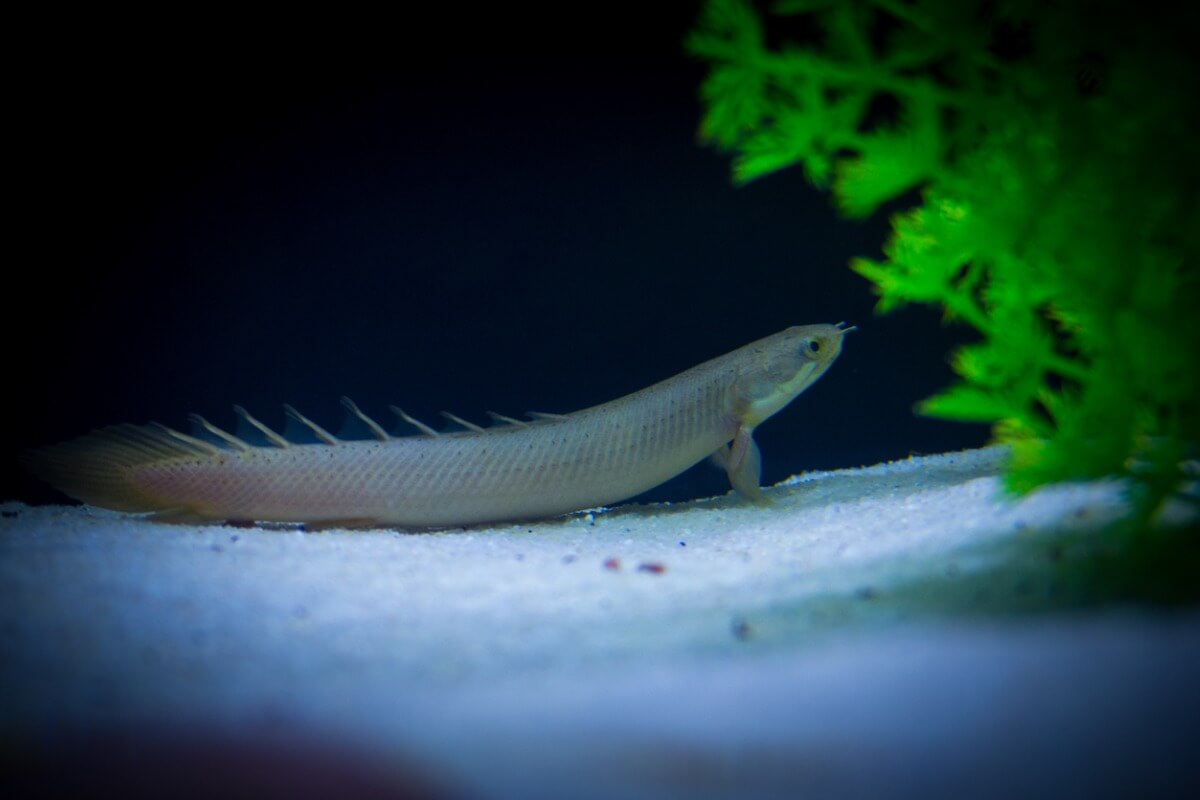
17. Saddled bichir (Polypterus endlicheri)
This specimen is similar to the Senegal bichir, only it has more obvious fins and mottled colors. Its pectoral fins are also used for movement, so its mythical appearance is emphasized. These fish are a good choice for large aquariums and can grow to over 30 centimeters (12 inches) in length.
18. Common wall gecko (Tarentola mauritanica)
This reptile is kept as a pet because it’s easily found all over the world. Despite being such a small lizard, it features skin that has beaked scales along its entire body, allowing it to bear some resemblance to dragons.
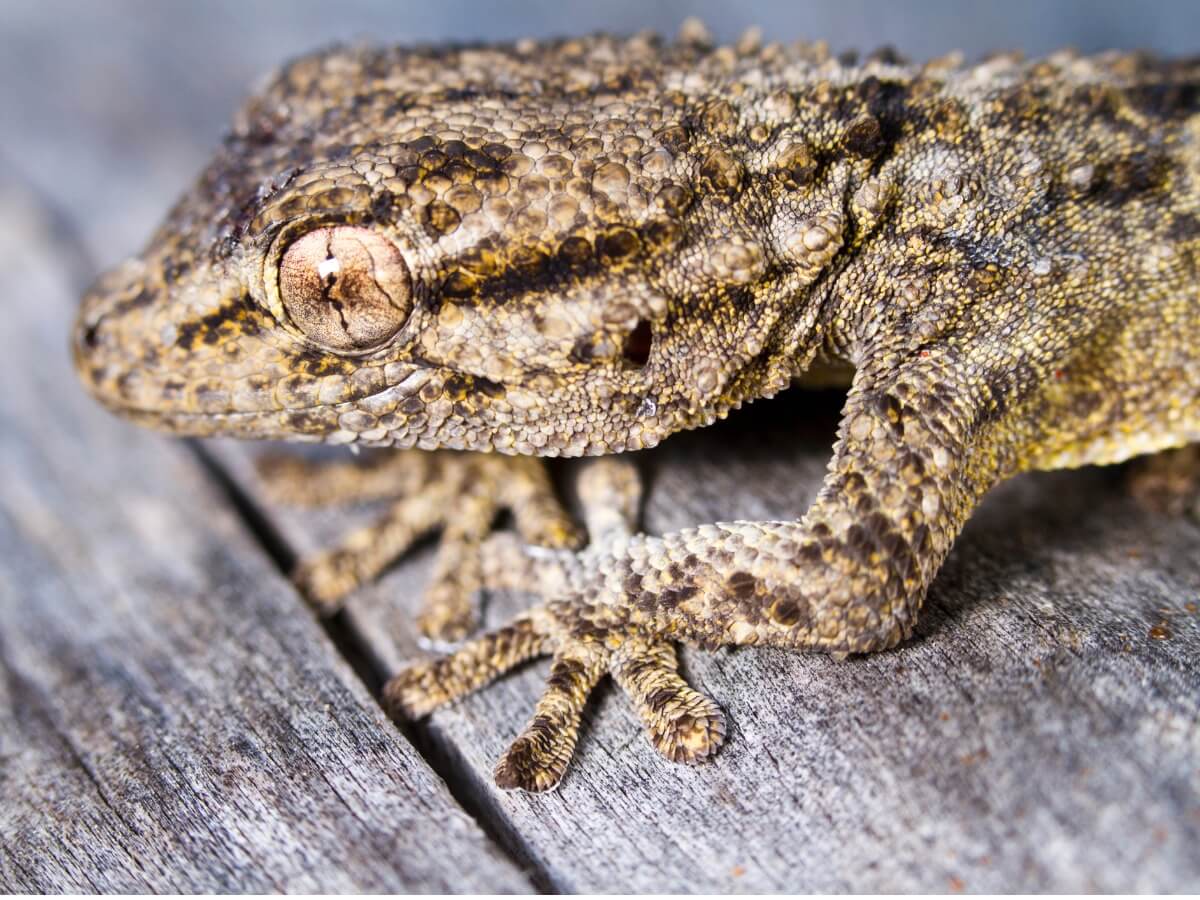
19. Four-horned chameleon (Trioceros quadricornis)
These chameleons have a spectacular appearance, as they have between 4 and 6 horns on their nose area. These structures are crowded together and give them a rather fearsome appearance. This species is rare as a pet, as it isn’t easy to reproduce in captivity. For this reason, most of the specimens for sale have been removed from the wild.
20. Parson’s chameleon (Calumma parsonii)
This chameleon is one of the largest chameleons in existence, reaching 80 centimeters (2.6 feet) in length. In fact, its enormous size is one of the reasons why it’s popular as a pet. In addition, its head has a design that covers its nose and part of its crest. This structure makes it look like an ancient creature quite similar to a dragon.
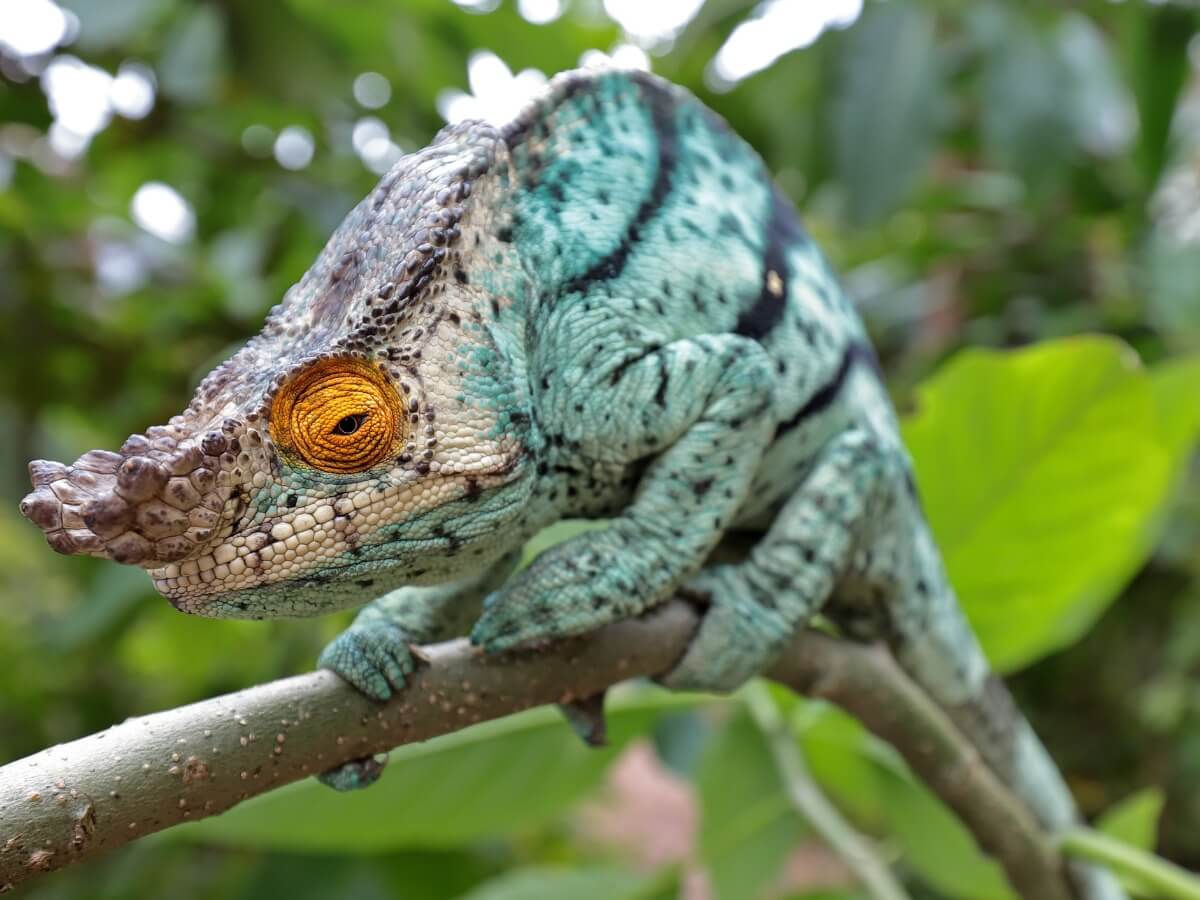
As you can see, there’s a great variety of exotic animals that look like dragons. Remember that if you want to adopt any of the above animals, you must first look into all the care they require. Don’t get frustrated if you can’t get the one you want. Keep looking, as there’s sure to be another pet that suits your needs.
All cited sources were thoroughly reviewed by our team to ensure their quality, reliability, currency, and validity. The bibliography of this article was considered reliable and of academic or scientific accuracy.
- Wilkinson, S. L. (2015). Reptile wellness management. Veterinary Clinics: Exotic Animal Practice, 18(2), 281-304.
- Warwick, C. (2014). The morality of the reptile” pet” trade. Journal of Animal Ethics, 4(1), 74-94.
- Grenard, S. (1999). The Bearded Dragon: An Owner’s Guide to a Happy Healthy Pet. Howell Book House.
- Birkalan, H. A., & Garry, J. (2017). Mythical Animals: Dragon: Motif B11. In Archetypes and Motifs in Folklore and Literature (pp. 73-79). Routledge.
- De Vosjoli, P. (2012). The lizard keeper’s handbook. Fox Chapel Publishing.
- Numan, A. (1998). The Chameleon Pet (Vol. 13). East African Publishers.
